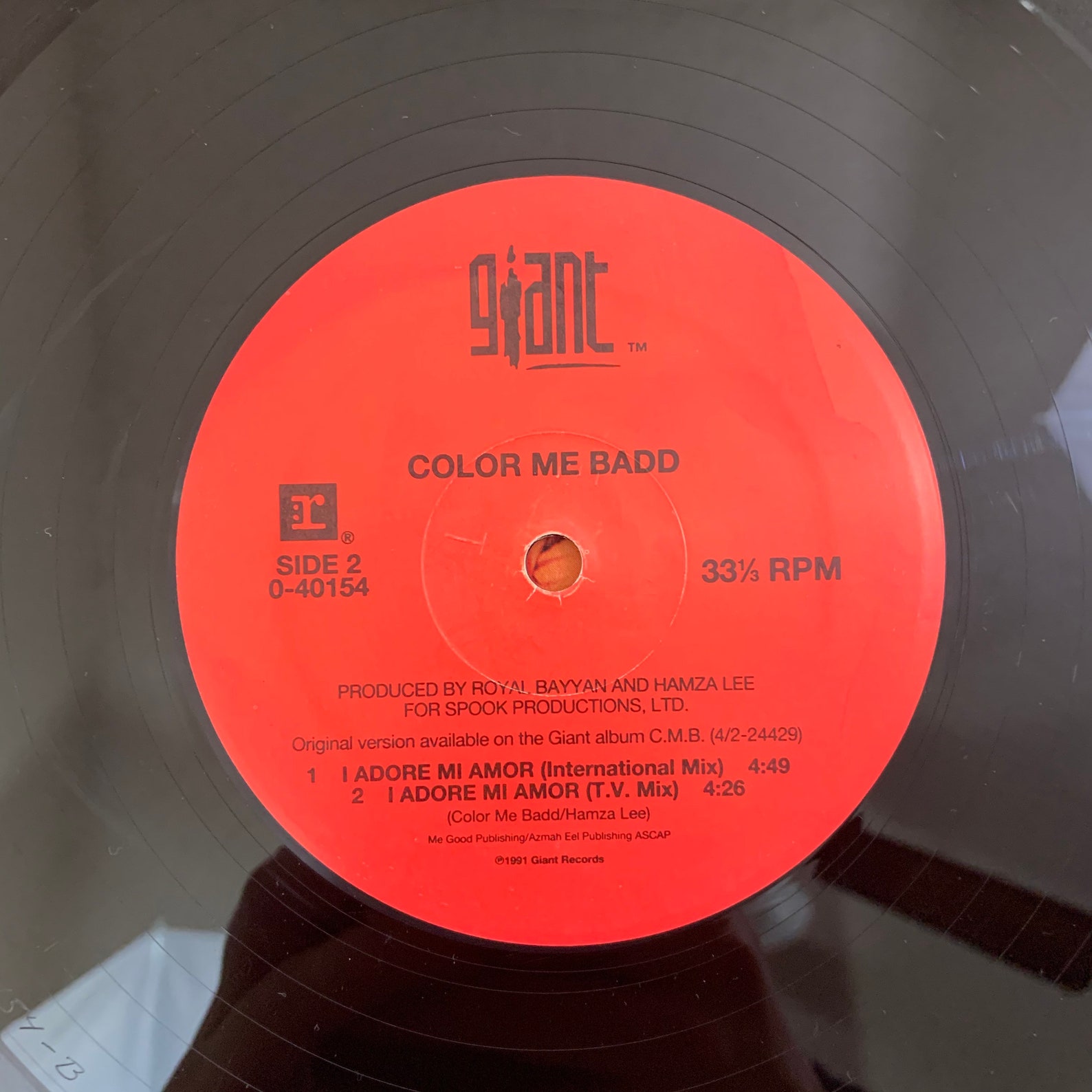

Color Me Bad is already a beautifully terrible name changing the spelling to “Badd” makes it even worse and, thus, better. Later on, they changed it up, naming themselves after a racehorse called Color Me Bad. Hamza Lee, that talent show’s musical director, would later become Color Me Badd’s producer he co-wrote “I Adore Mi Amor” with the group.Īt first, these four singers called themselves Take One.

(Hi-Five, who were in this column a couple of weeks ago, had members from Waco and from Oklahoma City, and it’s truly bizarre to think about Oklahoma City as a hotbed of early-’90s male R&B vocal groups.) Color Me Badd started in 1985, and they first played live at a local talent show, where they sang a Levis jingle. The four members of Color Me Badd got together at Northwest High School in Oklahoma City, where they all sang in the choir. In any case, “I Adore Mi Amor” goes down in history as Color Me Badd’s first #1 hit, so that’s what we’re talking about here.

The Billboard charts aren’t necessarily about what I remember.

Or maybe “I Wanna Sex You Up” just stuck in my head, and those other two songs didn’t. Maybe radio programmers were still a little too afraid of the word “sex” to let Color Me Badd’s signature song go all the way, and maybe “I Wanna Sex You Up” did the work of kicking the door open and the next couple of Color Me Badd singles were just able to cruise. (It’s a 7.) Later on, two other Color Me Badd songs - songs that I only barely remember existing - would blow past that spot to #1. Instead, “I Wanna Sex You Up” peaked at #2, and it held that spot for four weeks straight. In the official record, though, “I Wanna Sex You Up” was not Color Me Badd’s biggest single. I remember “I Wanna Sex You Up” being everywhere in 1991, and it was definitely a huge hit. “I Wanna Sex You Up” wasn’t the first song of its kind, but with its sighing backup vocals and its softly insistent Slick Rick and Betty Wright samples, it set the table for much of what would follow in the years ahead. (It’s also got a very funny line about “we can do it till we both wake up,” so maybe Color Me Badd didn’t understand how sex works.) That combination of elements, we’d soon learn, would become one of the dominant radio sounds of the ’90s.Ĭolor Me Badd referred to their sound as hip-hop doo-wop, and that style, minus the goofy name, would power seduction jams for the next decade. The title is silly and horny and extremely memorable, and there’s a funny disconnect between the couch-humping lyrics and the feathery, angelic delivery of the Color Me Badd boys. It’s a breezy little R&B jam that nods in the direction of rap music without including any actual rapping. “I Wanna Sex You Up” landed at the exact right moment. If you remember Color Me Badd, then you probably remember them as the guys with the carefully-sculpted facial hair who sang “I Wanna Sex You Up.” That’s their legacy, but that’s not what the charts tell us. Consider the case of Color Me Badd, the multi-racial Oklahoma City R&B vocal group with the extremely funny name. But sometimes, those numbers don’t line up with lived experience. The team at the magazine hones formulas and crunches numbers, and they’ve got a whole evolving methodology to figure out the most popular song in America during any given week. The Billboard charts aim for some kind of objectivity. In The Number Ones, I’m reviewing every single #1 single in the history of the Billboard Hot 100, starting with the chart’s beginning, in 1958, and working my way up into the present.


 0 kommentar(er)
0 kommentar(er)
